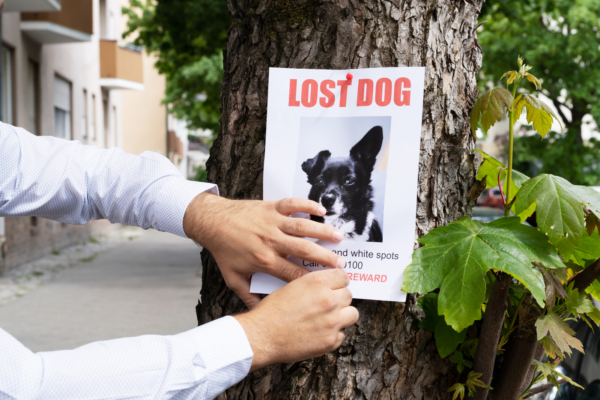How to get my dog to listen to me?
This would be a question that many caretakers of dogs, have asked themself, several times. Most of us have tried to get our dogs to do various behaviors, and the dogs are just staring at us as if they had no clue what we are talking about. There can be several reasons for that and if you suspect that there are underlying health issues, I would recommend that you talk to your vet. Also, if you have a dog whose history you don’t know, contacting a professional behavior consultant would be a great starting point, as the dog could be avoiding you because of previous having very bad experiences. But to teach your dog any behavior he has to be focused! How to get your dog to listen to you?
But if your dog seems to ignore you, there are some things you can try
First, if the dog does not respond to your cue, it is likely because the dog does not know the cue well enough, or second, that it is just not worth it, for the dog.
That only comes back to us, as it is us, that haven’t taught him, well enough.
The fact that you taught the dog to sit or come when you are indoor, does not mean that they are able to do it everywhere. Especially not if there are competing reinforcers around.
How do we then teach a reliable cue?
The first thing that we can do, is to re-teach a cue while making sure that we positively reinforce the behavior. If you already have a cue for the behavior, but the dog seems to ignore it, it can be a great choice to choose a new cue, that has no history with the dog at all.
One way to do this is to first have fluency in the behavior “off cue”. That way, we can shape the behavior to look exactly like we would like it to before the dog ever hears the cue. Then, we say the cue AS the behavior is happening.
Picture a goal photo from a race – the second the runners crosses the finish line; is the goal you should go for. Transferring that to the dog’s behavior, the goal would be that if the behavior you are looking for is a sit, then you say the cue just as the dog’s rear end touches the ground, almost simultaneous with the click, and then you positively reinforce the behavior.
How to get my dog to listen to me?
Next step is to say the cue WHILE the behavior is happening. Just before the dogs rear end touches the ground, you say sit and then click just as he touches the ground. Only give the cue, when you are sure that the dog is actually going to do the behavior. The reason for that is, if we say the cue many times, where the behavior is not happening, the cue comes to mean “sit sometimes”, and we will not get a reliable cue.
Move the cue gradually, until you can say it BEFORE the dog starts the behavior. This is great practice for our observational skills and teaches us to look at the small behaviors that happens, right before the desired behavior.
This step is easier with behaviors where we have great fluency, as the dog is likely to repeat the behavior quickly after the treat is swallowed, and we therefore are able to get a lot of repetitions where the latency is very short, by just cueing “sit” right after we see the swallowing movement in the throat. Because of our reinforcement history from the previous repetitions, the dog might not pay much attention to the cue at this point, but we are still doing some good conditioning of the cue.
Then it is time to test the cue in gradually increasingly difficult situations, and to start saying the cue when the dog is looking away etc. The criteria should be raised slowly, and always lowered, if the behavior doesn’t happen. This is done both at home, indoor, outdoor, at the training field etc. Basically – everywhere where we would like the dog to be able to respond to the cue. At this stage, it is all about getting as many repetitions as possible, where cue and correct behavior happens – that will help you get a very reliable cue.
If the behavior needs to be on perfect stimulus control, there are 2 more steps to do, but for a “listen” behavior or a recall – we don’t need the dog to ONLY do it, when he hears the cue, so the above should do for getting your to start listening.
The above will both teach the dog the meaning of the cue, but also make it worth his while to actually respond to the cue, right away.
How do we make it worth it?
If you feel convinced, that your dog already knows the cue, but is still not listening, the reason can be that there is nothing in it for the dog. The myth that the dog should do it, “to make us happy”, sounds very fluffy and cute. It is almost like a Disney fairytale, where the dog is so thankful for all the great stuff we provide, so they will do anything for us.
Unfortunately, that is not really how it works. Dogs will only do, whatever is paying off for them.
-If you call and the dog comes, and you give him his favorite ball, – then it paid off to come.
-If you call and the dog comes, and you don’t give him anything, – then it didn’t pay off to come.
Chances are, that the next time you call – if you have paid well earlier, the dog will come. If you haven’t, then he is unlikely to leave whatever interesting scent he has found.
But how about this scenario:
-You call, then dog comes, and you praise him with a “good boy”.
Is that good enough? Yes, and no. It is great for putting the behavior on a variable rate of reinforcement, that makes the behavior more resistant for extinction. But only if it’s done very gradually.
If we suddenly just start praising instead of actually giving the dog something, the behavior will start to fade.
Imagine yourself going to work. You have solved a very difficult task, and the boss calls you to the office. Boss says: You’ve done a great job. Unfortunately this month, we cannot pay you, but you did really good, so here is a paycheck that will bounce if you try to cash it.. But great job!
That might work one or 2 times. But the third time this happens, I would personally stop doing the work. I cannot use invalid paychecks for anything, if the money does not come to my account after all.
If this only happened every once in a while, – I would keep working as you never know which month is going to be the ones where the big check comes. But if it’s always just a “worthless” piece of paper, the behavior will eventually stop.
So the next time your dog doesn’t listen to you and you will ask yourself “how to get my dog to listen to me!”, ask yourself this:
Does my dog actually know what I am asking of him?
And:
Am I writing him rubber checks, or making sure I fill his bank account, so that I can withdraw later, without him minding it?
See also other posts:
June 30, 2023

Get Your Lost Dog Back Home Quickly: Follow These 12 Tips for Success
Vacations favor more frequent and longer walks with our furry friends. We travel, visit new places. Summer makes us loosen our brakes and allow our…
June 30, 2023

Managing Aggressive Dog Behavior: Tips for Peaceful Living
Living with an aggressive dog may seem challenging, but it can be peaceful and manageable with the right approach. One key aspect is to remain…
June 30, 2023

Unlocking the Secret to Successful Puppy Socialization: Quality over Quantity
Today, although the topic is very important, I will keep it brief. Socialization is a topic that could fill books or scientific papers. However, today…



